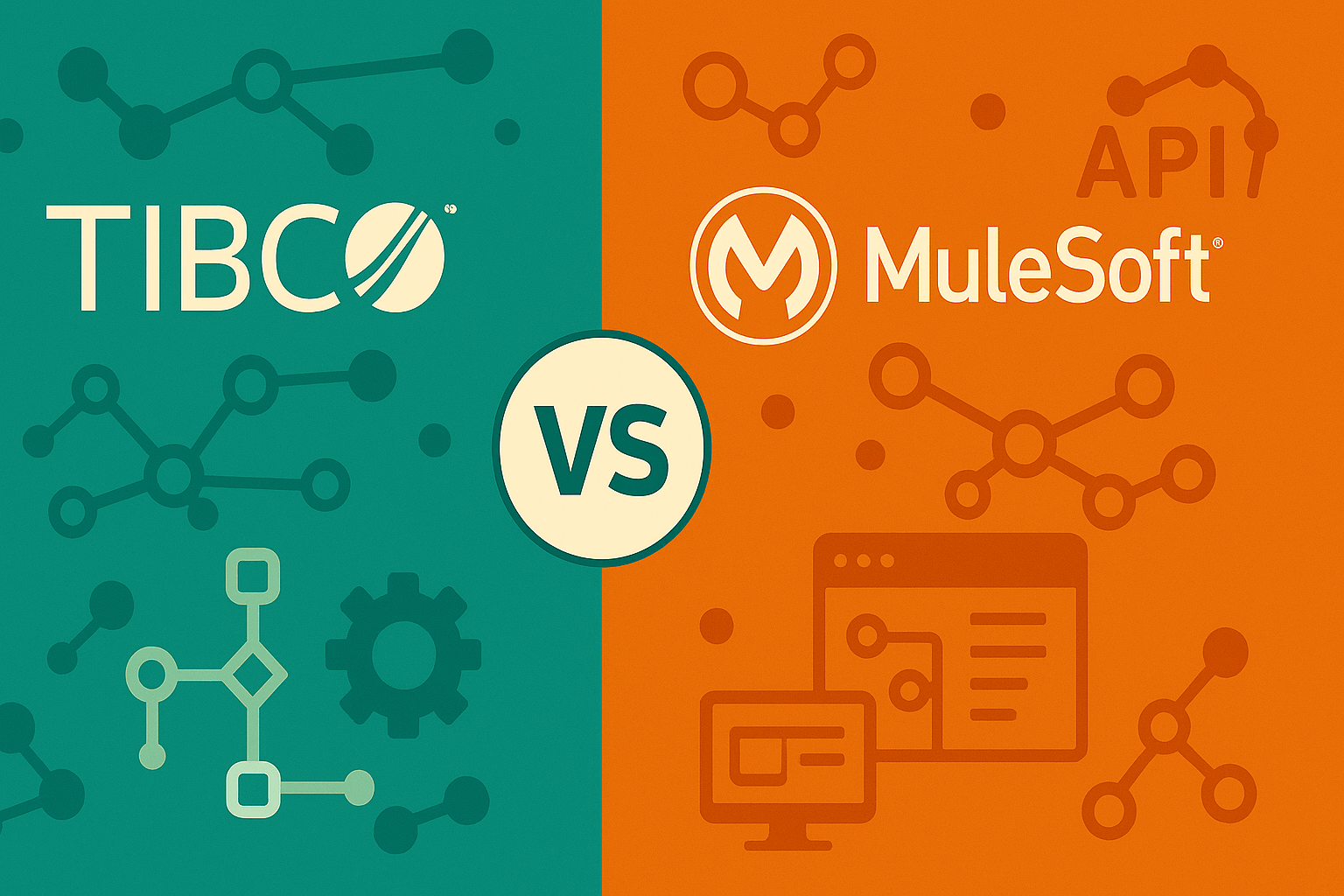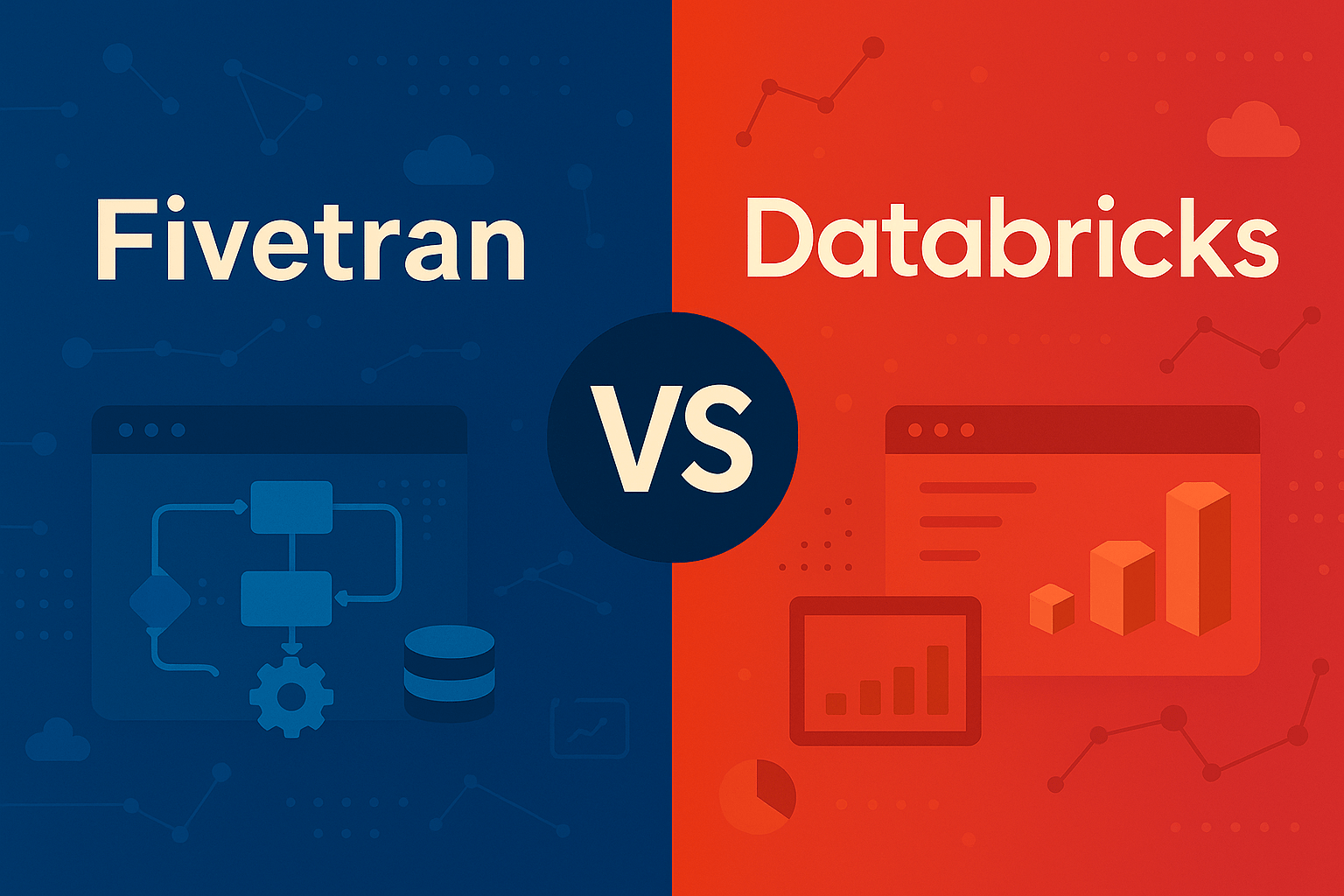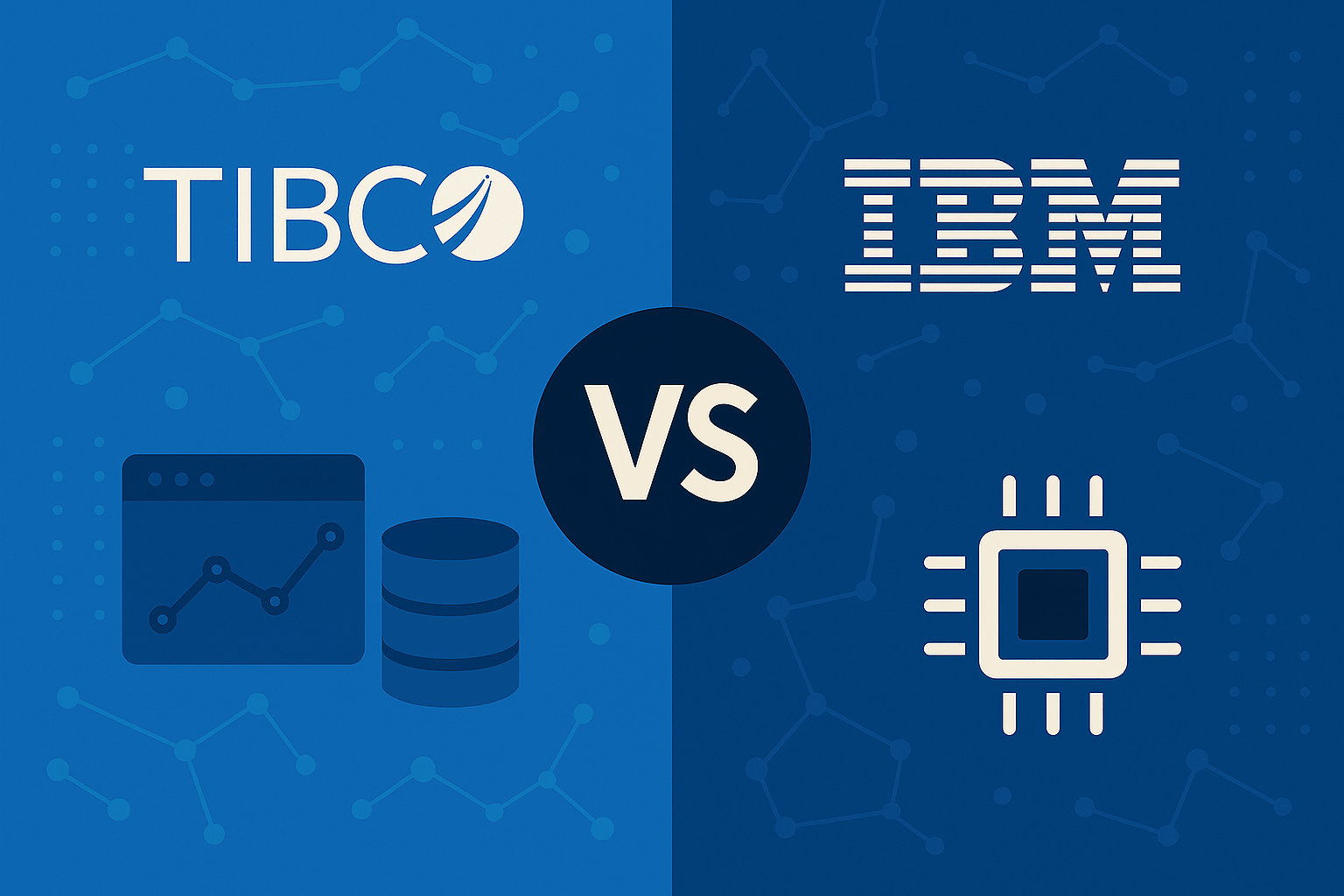TIBCO vs Solace: Which Enterprise Messaging Platform is Right for Your Business?
Choose the Right Messaging Platform for Your Enterprise
Enterprise messaging platforms serve as the critical foundation for modern business operations, enabling reliable message delivery between disparate systems and supporting seamless integration across complex IT environments. When organizations evaluate messaging solutions, the comparison often narrows down to two industry leaders: TIBCO and Solace.
Both platforms offer robust support for enterprise-grade messaging requirements, yet they serve different needs in the event driven architecture landscape. TIBCO brings decades of proven integration expertise with comprehensive middleware solutions, while Solace positions itself as the leader in real time applications and event mesh capabilities. This fundamental difference in approach affects everything from performance characteristics to deployment strategies.
Understanding which platform aligns with your specific business requirements requires examining their unique features, technical capabilities, and implementation considerations. This comprehensive guide will help you navigate the key differences between these messaging platforms, providing the insights needed to make an informed decision for your enterprise messaging strategy.
What Makes These Messaging Platforms Unique?
TIBCO – Comprehensive Integration Excellence
TIBCO has established itself as a cornerstone in enterprise application integration since its founding in 1997, building a reputation for reliability in mission-critical environments. The platform excels at connecting legacy systems with modern applications, making it particularly valuable for organizations with complex, heterogeneous IT landscapes that require comprehensive integration solutions.
The heart of TIBCO’s messaging capabilities lies in its Enterprise Message Service (EMS), which provides robust support for JMS (Java Message Service) standards. This foundation enables organizations to achieve reliable message delivery across their entire enterprise ecosystem, with particular strength in point-to-point communication patterns that many traditional business processes depend on. TIBCO primarily uses the EMS (Enterprise Message Service) protocol, which excels in high-throughput environments.
TIBCO’s architecture supports complex event processing and advanced analytics capabilities, allowing enterprises to not only move data but also derive meaningful insights from message flows. The platform integrates seamlessly with other TIBCO products, creating a unified environment for data management, analytics, and business process automation. Its architecture is designed for reliability and scalability, often preferred in large-scale, mission-critical applications.
Organizations in regulated industries particularly value TIBCO’s proven track record in maintaining compliance and data reliability standards. The platform has undergone extensive testing in financial services, healthcare, and government environments where message integrity and audit trails are paramount business requirements.
Solace – Event-Driven Architecture Specialist
Solace has carved out its position as the specialist in real-time event streaming and event mesh technology, focusing on the demands of modern, cloud-native architectures. The company’s PubSub+ platform represents a significant evolution in messaging technology, designed specifically for organizations embracing event driven architectures and digital transformation initiatives.
The platform’s event mesh capabilities enable seamless data flow across distributed systems, supporting everything from on-premises deployments to hybrid cloud and multi-cloud environments. This flexibility allows organizations to deploy Solace in different environments while maintaining consistent messaging behavior and management across their entire infrastructure.
Solace supports multiple protocols including MQTT, AMQP, REST, and JMS, making it exceptionally versatile for organizations that need to integrate various types of applications and devices. This multi-protocol approach is particularly valuable for IoT implementations, microservices architectures, and scenarios requiring wan optimization across geographically distributed systems.
The platform’s cloud-native design philosophy means it was built from the ground up to support modern deployment patterns. Organizations can leverage Solace’s event broker technology whether they’re running containerized applications, implementing serverless architectures, or managing traditional enterprise applications that require high availability and disaster recovery capabilities.
TIBCO vs Solace: Key Technical Differences
Messaging Architecture
The architectural differences between TIBCO and Solace reflect their distinct design philosophies and target use cases. TIBCO EMS operates on a traditional messaging broker model with strong JMS foundations, emphasizing reliable, transactional messaging that ensures data integrity across enterprise systems. This architecture excels in scenarios requiring guaranteed message delivery and complex routing rules.
Solace utilizes its proprietary SMF (Solace Message Format) protocol alongside multi-protocol support, enabling more flexible messaging patterns. The event mesh architecture allows for dynamic routing and connection management across distributed environments, making it particularly effective for organizations implementing microservices or IoT solutions where traditional point-to-point connections become unwieldy.
The protocol flexibility in Solace extends beyond traditional messaging patterns, supporting REST APIs, WebSocket connections, and MQTT for IoT devices within the same platform. This versatility enables organizations to standardize on a single messaging platform while supporting diverse application requirements and integration patterns.
TIBCO’s approach emphasizes depth and reliability within the JMS ecosystem, providing extensive features for message persistence, transaction management, and enterprise-grade security. This focus makes it particularly well-suited for applications where message ordering, guaranteed delivery, and complex routing logic are critical business requirements.
Performance and Scalability
Performance characteristics represent one of the most significant differentiators between these platforms. Solace delivers exceptional throughput capabilities, achieving up to 5.5 million messages per second on hardware appliances and 450,000 messages per second on software deployments for persistent messaging. For direct (non-persistent) messaging, these numbers can reach 29 million and 1.8 million messages per second respectively.
TIBCO EMS focuses on reliability over raw throughput, typically delivering around 3,000-5,000 messages per second for persistent messaging and up to 30,000 messages per second for direct messaging. While these numbers are lower than Solace’s peak performance, they represent consistent, predictable performance under enterprise workloads with complex processing requirements.
Latency characteristics also differ significantly between the platforms. Solace achieves microsecond-level latency for many messaging scenarios, making it ideal for financial trading systems, real-time analytics, and IoT applications where timing is critical. TIBCO operates in the millisecond range, which remains suitable for most enterprise applications but may not meet the requirements of ultra-low-latency use cases.
Scaling approaches reflect each platform’s architectural philosophy. Solace supports horizontal scaling through its event mesh technology, allowing organizations to add capacity by deploying additional event broker instances across their infrastructure. TIBCO typically scales through vertical scaling and clustering approaches, which can be effective but may require more careful capacity planning and management.
Deployment Options
Deployment flexibility has become increasingly important as organizations adopt hybrid and multi-cloud strategies. Solace was designed with cloud-native principles, offering software, hardware, and fully managed cloud services that can be deployed consistently across different environments. This approach supports seamless migration between deployment models as business requirements evolve.
TIBCO’s heritage in on-premises deployments provides strong capabilities for traditional data center environments, though the platform has expanded to support cloud and container deployments. Organizations with significant on-premises infrastructure often find TIBCO’s deployment model aligns well with existing operational procedures and security requirements.
Container and Kubernetes support varies between the platforms. Solace provides native Kubernetes operators and container images designed for cloud-native deployment patterns, supporting automatic scaling, service discovery, and integration with modern DevOps tools. TIBCO supports containerization but may require additional configuration and management overhead to achieve similar cloud-native behavior.
The management complexity also differs significantly. Solace’s event mesh technology enables centralized management of distributed messaging infrastructure, providing unified monitoring and configuration across multiple deployment environments. TIBCO typically requires more hands-on management, particularly in complex, multi-site deployments where configuration synchronization and monitoring can become challenging.
What Enterprise Users and Experts Say
Real-world user experiences provide valuable insights into how these platforms perform in production environments. TIBCO users consistently highlight the platform’s integration capabilities and mature feature set, particularly praising its reliability in mission-critical applications. Organizations in financial services and regulated industries frequently cite TIBCO’s comprehensive audit trails and compliance features as key advantages for their operational requirements.
Solace users emphasize the platform’s real-time performance and ease of deployment, particularly in cloud and hybrid environments. Many organizations report significantly reduced implementation times compared to traditional messaging platforms, with some citing deployment periods of weeks rather than months. The platform’s event mesh capabilities receive particular praise from organizations implementing digital transformation initiatives.
Industry analysts from Gartner and Forrester recognize both platforms as leaders in their respective domains. Market positioning data shows Solace holding the #2 position with 15.5% market share in Message Oriented Middleware, while TIBCO maintains the #6 position with 6.8% market share. This positioning reflects Solace’s rapid growth in modern messaging scenarios and TIBCO’s established presence in traditional enterprise environments.
User testimonials from financial services organizations highlight different strengths. Trading firms often prefer Solace for market data distribution due to its low-latency capabilities, while banks frequently choose TIBCO for transaction processing and regulatory reporting where reliability and audit capabilities take precedence over raw performance.
Telecommunications companies represent another key user segment, with many adopting Solace for real-time network monitoring and IoT device management. Manufacturing organizations often utilize TIBCO for supply chain integration and ERP connectivity, leveraging its comprehensive integration tools and established connector ecosystem.
The community and support ecosystems also differ significantly. Solace has built a strong community around event-driven architecture best practices, providing extensive documentation and examples for modern use cases. TIBCO leverages its longer market presence with deep expertise in enterprise integration patterns and established partnerships with system integrators. Users commend the user-friendly integration services provided by ApiX-Drive that enhance the usability of both Solace and TIBCO.
Implementation Requirements and Costs
Cost structures between TIBCO and Solace reflect their different positioning and target markets. TIBCO typically involves higher upfront costs due to its comprehensive integration suite and enterprise-grade licensing model. Organizations often purchase TIBCO as part of broader integration initiatives, making the total cost of ownership calculation more complex but potentially more cost-effective for comprehensive integration requirements.
Solace offers volume-based licensing with a generous free tier supporting up to 100,000 messages per second, making it accessible for proof-of-concept projects and smaller deployments. This pricing model allows organizations to start small and scale licensing as their messaging volumes grow, providing better alignment between costs and actual usage.
Maintenance requirements differ significantly between the platforms. TIBCO deployments typically require larger support teams due to the complexity of integration scenarios and the need for specialized expertise in enterprise integration patterns. Organizations often maintain teams of 6-10 people for comprehensive TIBCO environments, including specialists in different integration technologies and business domains.
Solace environments generally require smaller maintenance teams, with many organizations successfully managing production deployments with 3-4 people. The platform’s cloud-native design and centralized management capabilities reduce operational overhead, though organizations still need expertise in event-driven architecture patterns and modern deployment practices.
Training and skill requirements represent important considerations for both platforms. TIBCO requires deep expertise in enterprise integration patterns, JMS, and often specific industry knowledge for effective implementation. The learning curve can be steep, but the skills are transferable across many enterprise integration scenarios.
Solace emphasizes modern development practices and event-driven architecture concepts. While the technical learning curve may be shorter, organizations often need to develop new operational practices around event mesh management and modern observability tools. The shift from traditional request-response patterns to event-driven thinking can require significant organizational change management.
Total cost of ownership calculations over 3-5 year periods often favor different platforms depending on specific requirements. Organizations with extensive integration needs may find TIBCO more cost-effective despite higher upfront costs, while those focused on real-time event streaming and cloud-native architectures often achieve better ROI with Solace.
Which Messaging Platform is Right for Your Business?
Choose TIBCO if you need:
Comprehensive enterprise application integration across legacy systems represents TIBCO’s core strength. Organizations with complex, established IT environments often find TIBCO’s mature integration capabilities essential for connecting mainframe systems, ERP platforms, and custom applications without disrupting existing business processes.
Complex event processing and advanced analytics capabilities make TIBCO particularly valuable for organizations that need to derive insights from message flows in real-time. The platform’s built-in analytics tools and integration with broader TIBCO analytics products enable sophisticated business intelligence scenarios that go beyond simple message routing.
Mission-critical financial applications benefit from TIBCO’s proven track record in regulated environments. The platform’s extensive compliance features, audit trails, and transaction management capabilities provide the reliability and transparency required for banking, insurance, and other highly regulated industries.
Strong middleware solutions for SOA (Service-Oriented Architecture) architectures remain relevant for many enterprise environments. TIBCO’s comprehensive service integration capabilities, combined with its enterprise service bus functionality, provide a solid foundation for organizations maintaining or modernizing SOA-based systems.
Extensive integration with existing enterprise infrastructure often tips the scales toward TIBCO for organizations with significant investments in enterprise software. The platform’s connectors and adapters for major ERP, CRM, and database systems reduce implementation complexity and leverage existing technology investments. TIBCO provides a comprehensive suite of integration tools through its TIBCO Cloud Integration platform, ensuring high levels of interoperability and efficiency.
Choose Solace if you want:
High-performance real-time event streaming and low latency messaging capabilities position Solace as the clear choice for applications requiring microsecond response times. Financial trading systems, IoT sensor networks, and real-time analytics platforms benefit significantly from Solace’s performance characteristics.
Modern event-driven architecture for digital transformation initiatives aligns perfectly with Solace’s design philosophy. Organizations implementing microservices, adopting cloud-native development practices, or building event-driven systems find Solace’s event mesh technology provides the flexibility and scalability needed for modern applications.
Cloud-native deployment with hybrid and multi-cloud flexibility enables organizations to implement consistent messaging across diverse infrastructure environments. Solace’s ability to provide identical functionality whether deployed on-premises, in public clouds, or as a managed service simplifies operational complexity and supports evolving deployment strategies.
Easy migration from legacy messaging systems with minimal disruption represents a significant advantage for organizations looking to modernize their messaging infrastructure. Solace’s JMS compatibility and migration tools enable gradual transitions from platforms like TIBCO EMS without requiring complete application rewrites.
Event mesh technology for seamless data flow across distributed environments becomes increasingly important as organizations adopt microservices and edge computing architectures. Solace’s dynamic routing capabilities and protocol flexibility support complex, distributed applications that traditional messaging platforms struggle to accommodate effectively.
The decision between TIBCO vs Solace ultimately depends on your organization’s specific requirements, existing infrastructure, and strategic direction. Organizations focused on comprehensive integration and proven reliability in regulated environments often find TIBCO’s mature platform meets their needs effectively. Companies prioritizing real-time performance, cloud-native deployment, and modern event-driven architectures typically achieve better results with Solace.
Consider evaluating both platforms through proof-of-concept deployments that reflect your actual use cases and performance requirements. Many organizations benefit from taking advantage of free trials and vendor-provided evaluation environments to validate performance claims and assess operational complexity before making final decisions.
Migration paths exist between these platforms, with Solace offering specific tools and services to help organizations transition from TIBCO EMS to Solace Event Broker. This flexibility means the choice doesn’t necessarily lock you into a single platform permanently, providing additional confidence in your decision-making process. Migrating from TIBCO EMS to Solace Event Broker involves a proven set of six steps for a smooth transition.
The messaging platform landscape continues evolving rapidly, with both vendors investing heavily in cloud services, improved developer experiences, and enhanced integration capabilities. Staying current with platform roadmaps and industry trends will help ensure your chosen solution continues meeting your organization’s needs as business requirements evolve.
Factory Thread – Messaging with Built-In Data Context for Industrial Agility
While TIBCO focuses on integration reliability and Solace leads in event mesh scalability, Factory Thread offers a third option—tailored for real-time industrial messaging with embedded data transformation, context, and actionability.
Factory Thread blends messaging, data virtualization, and workflow automation in a single platform optimized for manufacturing and operational environments. It connects ERP, MES, and IoT systems with low-code flows and supports trigger-based data movement across edge, on-prem, and cloud infrastructure.
Unlike TIBCO or Solace, which focus primarily on message transport, Factory Thread emphasizes business logic execution, real-time data federation, and context-aware routing—enabling not just fast messaging but meaningful decision support tied directly to operational workflows.
For manufacturers and supply chain teams needing fast, actionable messaging with built-in ETL and edge deployment, Factory Thread offers a pragmatic, ready-to-run solution that fills the gap between raw transport and integrated intelligence.
Share this
You May Also Like
These Related Stories

TIBCO vs MuleSoft: Which Integration Platform is Right for You?

Fivetran vs Databricks: Which Data Platform is Right for Your Business?



No Comments Yet
Let us know what you think